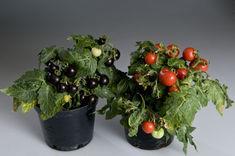
Scientists have expressed genes from snapdragon in tomatoes to grow purple tomatoes high in health-protecting anthocyanins.
Scientists at the John Innes Centre (JIC) are investigating ways to use genetic modification to increase the levels of health-promoting compounds in more commonly eaten fruits and vegetables. Anthocyanins are naturally occurring pigments found at particularly high levels in berries such as blackberry, cranberry and chokeberry.
In this study the scientists expressed two genes from snapdragon that induce the production of anthocyanins in snapdragon flowers. The genes were turned on in tomato fruit. Anthocyanins accumulated in tomatoes at higher levels than anything previously reported for metabolic engineering in both the peel and flesh of the fruit and have resulted in the fruit being an intense purple colour.
The scientists tested whether these elevated levels actually had an effect on health. In a pilot test, the lifespan of cancer-susceptible mice was significantly extended when their diet was supplemented with the purple tomatoes compared to supplementation with normal red tomatoes.
Professor Cathie Martin from the JIC said: “This is one of the first examples of metabolic engineering that offers the potential to promote health through diet by reducing the impact of chronic disease.
“And certainly the first example of a GMO with a trait that really offers a potential benefit for all consumers. The next step will be to take the preclinical data forward to human studies with volunteers to see if we can promote health through dietary preventive medicine strategies.”
Anthocyanins offer protection against certain cancers, cardiovascular disease and age-related degenerative diseases. There is evidence that anthocyanins also have anti-inflammatory activity, promote visual acuity and hinder obesity and diabetes.
“Most people do not eat five portions of fruits and vegetables a day, but they can get more benefit from those they do eat if common fruit and veg can be developed that are higher in bioactive compounds,” said Martin.
The research, to be published in Nature Biotechnology, was funded by the EU and by JIC’s core strategic grant from Biotechnology and Biological Sciences Research Council (BBSRC).



